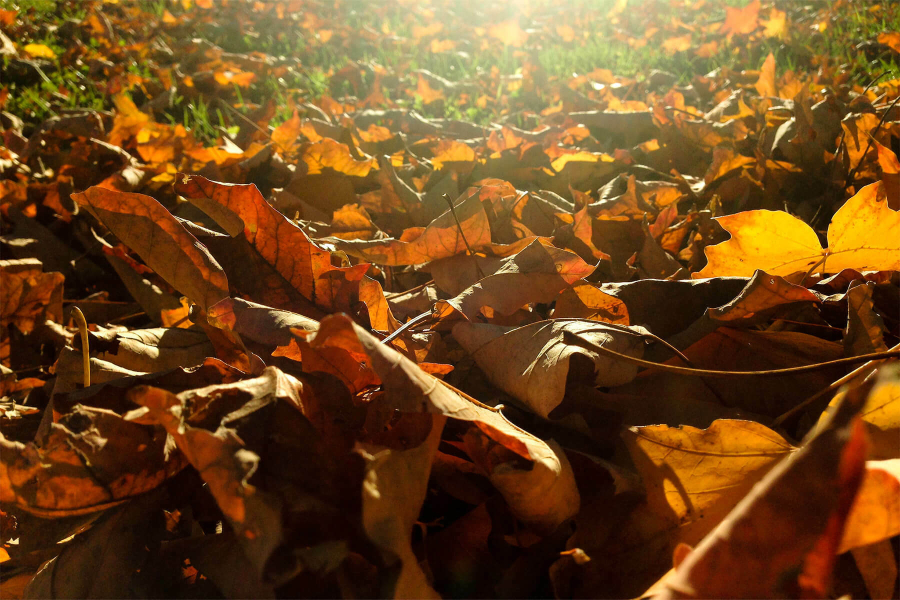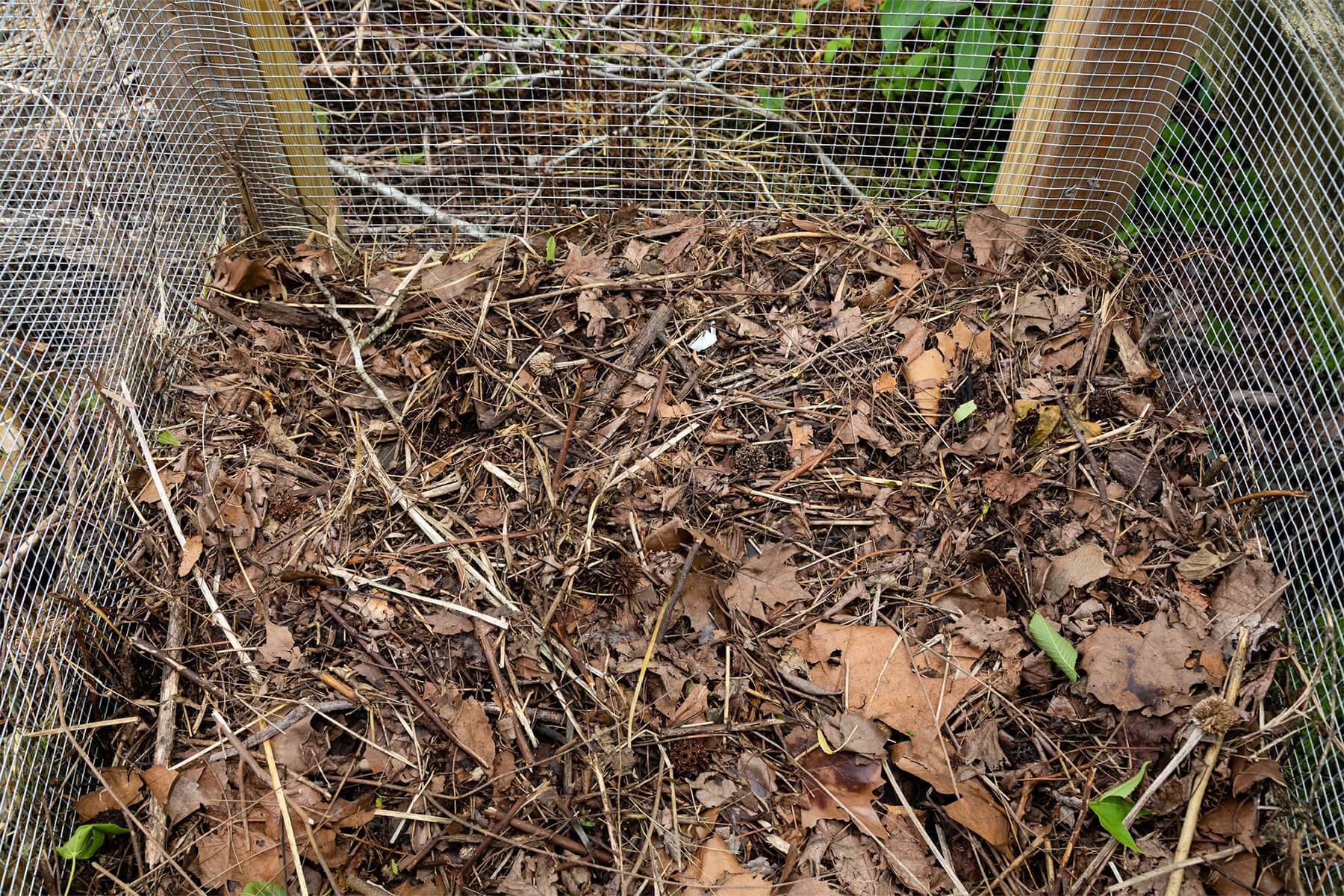Mulch Your Leaves
Mulch your leaves to improve your soil and provide habitat to wildlife

While it’s something of a fall pastime in America, raking up and bagging your leaves can have negative impacts on the environment. Leaf litter serves as habitat for wildlife, protects root systems and improves soil structure in your yard. But when you bag them, you lose those benefits and instead the leaves end up in landfills where they break down and release harmful greenhouse gasses. Mulching your leaves or leaving them all together can be a great alternative.
Project Time Estimation
A few hours depending on the size of your yard and amount of fallen leaves
Materials
- Lawn mower with mulching blade attached
- Rake
- (If bagging) paper lawn bags
- (If composting) shovel or gardening fork
Project Overview
- Spread out fallen leaves
- Mow your yard
- Spread leaf mulch
- Monitor for more leaves
- Other options
1. Spread out fallen leaves
Leave the rake in the shed and the leaf-blower at the hardware store—mulching allows you to get rid of leaves without having to wrestle them into piles first!
The first step is to spread out fallen leaves in your yard with a rake. You want the leaves to be as dry as possible so they can cleanly be cut, so try to avoid mulching your leaves after rain.
2. Mow your yard
If you want to leave the mulched leaves in your yard all you have to do is use your lawnmower. A regular mower works and most have mulching blades. Specially designed blades specifically for leaf mulching can be bought for most lawnmowers but are not required. Also, electric mowers are just as effective as gas mowers. If you are able to make the switch an electric mower is lighter, quieter and better for the environment.
Set the blade or mower height to the highest position to mulch the leaves. You want the leaves to be cut into inch sized pieces so they can break down.The blade will cut the leaves into small pieces, which will settle beneath the green canopy of your lawn.
Any lawn mower can chop up leaves, but a mulching attachment will help. You may need to take a few passes over the leaves to get the leaves to a small size, but this will still require much less work than raking and bagging all of the leaves in your yard!
3. Spread leaf mulch
If there is a specific location where you want your mulched leaves in your yard, you can attach a clippings bag to your lawnmower to collect the leaves. Mulched leaves take up only a tenth of the space of fallen leaves and are easy to move. Then you can spread them on areas you want the mulch. Once your mulched leaves are in the location you want them, wetting them will help them break down and decompose.
Spread mulched leaves at a thickness of 3 to 4 inches around trees and shrubs and 2 to 3 inches for perennial beds. You can also use them to insulate rose bushes in this fall and then remove them before the rose bushes start growing in the spring.
4. Monitor your yard
As more leaves fall throughout the fall, repeat the process of mulching the leaves by mowing them. If you find that you have too much leaf mulch (you can no longer see the grass with leaf mulch added or your garden beds already have 2-4 inches of leaf mulch) you can store extra in bags to use for another year. Just keep the bags in a cool, dry place. You can also reach out to neighbors or local gardeners to see if they need mulch for their gardens and give away your extra!
Other options

If you don’t want to mulch your leaves, composting them is another option. Leaves, twigs and other carbon-rich “brown” plant material can be added to existing compost piles to bring balance to nitrogen-rich lawn clippings, fruit and vegetable waste and other “green” plant material. Or, large piles of leaves can be composted on their own. If kept moist and periodically turned, the leaves will decompose and create a dark, crumbly compost that can enrich the soil in your garden.
If putting fallen leaves to use in your lawn or garden just isn’t an option, then consider curbside collection. A number of local governments collect leaves each fall, whether they are raked in piles to the curb or placed in paper bags. Even garbage-collection services often offer yard waste pick-up, transporting leaves to municipal composting facilities to keep them out of landfills.
If you don’t want to mulch your leaves, composting them is another option. Leaves, twigs and other carbon-rich “brown” plant material can be added to existing compost piles to bring balance to nitrogen-rich lawn clippings, fruit and vegetable waste and other “green” plant material. Or, large piles of leaves can be composted on their own. If kept moist and periodically turned, the leaves will decompose and create a dark, crumbly compost that can enrich the soil in your garden.

A lit match is a tempting solution to the leaf pile problem, but burning leaves can pollute the air and harm our health. According to the U.S. Environmental Protection Agency, the open burning of leaves puts particulate matter and hydrocarbons into the air. The former can increase your chances of respiratory infection, while the latter contains toxic and cancer-causing compounds.
